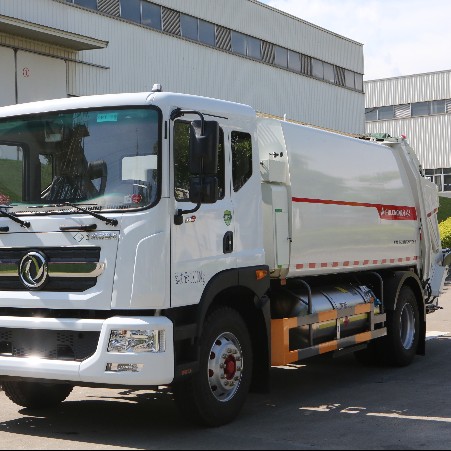In the bustling heart of every city lies a crucial yet often overlooked aspect of urban infrastructure: waste management. Urban environments generate vast quantities of waste daily, ranging from household garbage to industrial and commercial refuse. Effective waste management is not just about keeping streets clean, it’s about safeguarding public health, preventing environmental degradation, and conserving resources. Without proper waste management systems, cities would drown in their waste, posing serious health hazards and environmental risks.
Enter the garbage truck—a ubiquitous presence on city streets, quietly performing the essential task of waste collection. They are specialized vehicles designed to efficiently collect, transport, and dispose of waste materials from residential, commercial, and industrial areas. They come in various shapes and sizes, each tailored to handle different types and volumes of waste.

Garbage Trucks: Origins and Development
The journey of garbage trucks began modestly in the late 19th century when growing urban populations necessitated more efficient waste disposal methods. Early designs were rudimentary, often resembling horse-drawn carriages equipped with bins for manual waste collection. The introduction of motorized vehicles in the early 20th century marked a significant leap forward, allowing for greater efficiency and capacity in waste collection.
Technological Advancements
As cities grew larger and waste volumes increased, so did the need for technological innovations in garbage truck design. The mid-20th century saw the advent of hydraulic systems and compactors, revolutionizing waste collection by enabling trucks to handle larger quantities of waste more efficiently. Automated collection systems further streamlined operations, reducing labor costs and improving collection times.

Environmental Impact and Efficiency
The evolution of garbage trucks has not only enhanced operational efficiency but also significantly reduced their environmental footprint. Modern trucks are equipped with emission control systems, fuel-efficient engines, and alternative fuel options such as compressed natural gas and electric powertrains. These advancements contribute to lower greenhouse gas emissions and less air pollution, promoting cleaner and healthier urban environments.
Specialized Applications
Beyond traditional waste collection, garbage trucks have diversified into specialized applications tailored to specific waste management needs. Recycling trucks equipped with separate compartments for recyclable materials help cities achieve higher recycling rates and reduce landfill waste. Trucks designed for organic waste collection support composting efforts, turning food scraps and yard trimmings into valuable soil amendments.

Conclusion
The evolution of garbage trucks mirrors the progress of urban waste management from its humble beginnings to a sophisticated and essential service. From manual collection methods to automated systems, from diesel-powered engines to electric alternatives, garbage trucks have continuously adapted to meet the growing demands of modern cities. Looking ahead, the focus remains on enhancing efficiency, minimizing environmental impact, and innovating solutions to tackle the complexities of urban waste management.
In conclusion, while they may not always receive the recognition they deserve, garbage trucks play a pivotal role in keeping our cities clean, healthy, and sustainable. As technology continues to advance and environmental awareness grows, the evolution of garbage trucks in urban waste management will undoubtedly continue to shape the future of our cities for generations to come.






